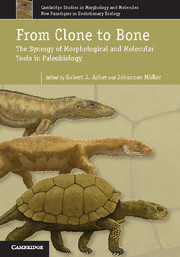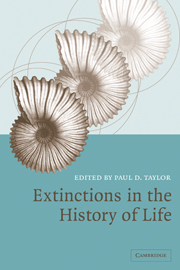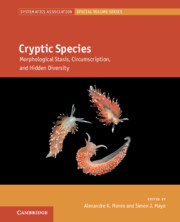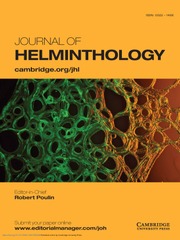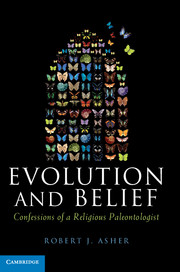From Clone to Bone
Since the 1980s, a renewed understanding of molecular development has afforded an unprecedented level of knowledge of the mechanisms by which phenotype in animals and plants has evolved. In this volume, top scientists in these fields provide perspectives on how molecular data in biology help to elucidate key questions in estimating paleontological divergence and in understanding the mechanisms behind phenotypic evolution. Paleobiological questions such as genome size, digit homologies, genetic control cascades behind phenotype, estimates of vertebrate divergence dates, and rates of morphological evolution are addressed, with a special emphasis on how molecular biology can inform paleontology, directly and indirectly, to better understand life's past. Highlighting a significant shift towards interdisciplinary collaboration, this is a valuable resource for students and researchers interested in the integration of organismal and molecular biology.
- Features contributions from top researchers in cutting-edge fields, providing specific examples of how molecular biology informs paleontological understanding
- Demonstrates how the paleontological toolkit has expanded to include methods and concepts in molecular biology, highlighting the unexpected sources that can inform understanding of deep time
- Marks a significant shift towards interdisciplinary collaboration, with broad appeal to students and researchers interested in the integration of organismal and molecular biology
Reviews & endorsements
'Fundamental questions in biology, such as the origin of form and the tree of life, were major concerns for the leading biologists of the nineteenth century, but those researchers lacked the research tools to test their ideas. This book highlights the remarkable synergies between molecular biologists, developmental biologists, and palaeobiologists in providing new understanding. Asher and Müller have assembled an excellent set of chapters on these themes, and these provide incisive introductions to an important interdisciplinary field.' Michael J. Benton, University of Bristol
'This book is a must-read for scientists interested in how molecular biology and morphology intersect, and especially for those scientists who are interested in incorporating paleontological evidence in their research. Chapter contributors are world experts in their respective areas, making this work one of the best in the field. Graduate students and faculty who study morphology, specifically those interested in evo-devo (evolutionary/development biology), will gain new insights after reading this important work. Highly recommended.' T. A. Franz-Odendaal, Choice
'Each chapter is written in an accessible manner, and is appropriate for graduate-level students to late career scientists. Asher and Müller have assembled an exciting volume that provides great cohesive insight into the synergistic nature of modern paleontology and molecular biology.' The Quarterly Review of Biology
Product details
October 2012Hardback
9781107003262
396 pages
253 × 178 × 24 mm
0.99kg
65 b/w illus. 16 colour illus. 8 tables
Available
Table of Contents
- List of contributors
- 1. Molecular tools in paleobiology: divergence and mechanisms Robert J. Asher and Johannes Müller
- Part I. Divergence:
- 2. Genomics and the lost world: paleontological insights into genome evolution Chris Organ
- 3. Rocking clocks and clocking rocks: a critical look at divergence time estimation in mammals Olaf R. P. Bininda-Emonds, Robin M. D. Beck and Ross D. E. MacPhee
- 4. Morphological largess: can morphology offer more and be modeled as a stochastic evolutionary process? Hans C. E. Larsson, T. Alexander Dececchi and Luke B. Harrison
- 5. Species selection in the molecular age Carl Simpson and Johannes Müller
- Part II. Mechanisms:
- 6. Reconstructing the molecular underpinnings of morphological diversification: a case study of the Triassic fish Saurichthys Leonhard Schmid
- 7. A molecular guide to regulation of morphological pattern in the vertebrate dentition and the evolution of dental development Moya Smith and Zerina Johanson
- 8. Molecular biology of the mammalian dentary: insights into how complex skeletal elements can be shaped during development and evolution Neal Anthwal and Abigail S. Tucker
- 9. Flexibility and constraint: patterning the axial skeleton in mammals Emily A. Buchholtz
- 10. Molecular determinants of marsupial limb integration and constraint Karen E. Sears, Carolyn K. Doroba, Xiaoyi Cao, Dan Xie and Sheng Zhong
- 11. A developmental basis for innovative evolution of the turtle shell Shigeru Kuratani and Hiroshi Nagashima
- 12. A molecular-morphological study of a peculiar limb morphology: the development and evolution of the mole's 'thumb' Christian Mitgutsch, Michael K. Richardson, Merijn A. G. de Bakker, Rafael Jiménez, José Ezequiel Martín, Peter Kondrashov and Marcelo R. Sánchez-Villagra
- 13. Manus horribilis: the chicken wing skeleton Michael K. Richardson
- Index.

